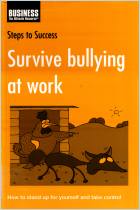
The Bully-Proof Workplace
Essential Strategies, Tips, and Scripts for Dealing with the Office Sociopath
Read or listen offline
Amazon KindleRecommendation
Bullies blight the workplace. They harm morale and productivity. But if you understand bullies, you can learn to deal with them. Bullies fall into four categories: “Belier, Blocker, Braggart” and “Brute.” Confronting a bully is difficult, but if you succeed, you may benefit almost immediately. You could feel a weight lift from your shoulders and take pride in your ability as an executive. But, authors Peter. J. Dean and Molly D. Shepard caution in this exhaustive – and sometimes exhausting – manual, if things don’t go well, you could face an even more difficult situation. They offer varied techniques for putting bullies in their place. getAbstract recommends their guidance to human resource officials, managers and victims of bullies.
Summary
About the Authors
Peter J. Dean, PhD, and Molly D. Shepard are joint partners in The Leaders Edge/Leaders By Design, an executive development consultancy. Dean has taught at the Wharton School, among other universities. Shepard has more than 25 years of experience in executive development.



















Comment on this summary or Démarrer une discussion